Related Research Articles

Sir Charles Gregory Wade KCMG, KC, JP was Premier of New South Wales 2 October 1907 – 21 October 1910. According to Percival Serle, "Wade was a public-spirited man of high character. His ability, honesty and courage were quickly recognized and, though he could not be called a great leader, he was either in office or leader of the opposition for nearly the whole of his political life of 14 years. His career as a judge was short, but his sense of justice and grasp of principles and details, eminently fitted him for that position."
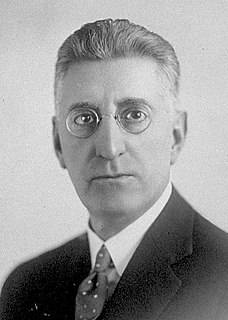
Reginald Walter Darcy Weaver was an Australian conservative parliamentarian who served in the New South Wales Legislative Assembly for 28 years. Serving from 1917 in the backbenches, he entered the cabinet of Thomas Bavin in 1929 as Secretary for Mines and Minister for Forests until he returned to opposition in 1930. Following the success of the United Australia Party in the 1932 election, Weaver returned as the Secretary for Public Works and Minister for Health in the Stevens ministry.
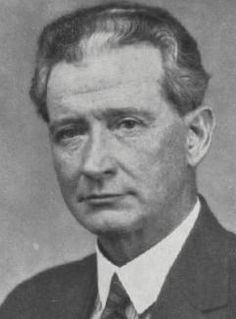
Joseph Herbert Gander was an Australian politician. He was a member of the Australian House of Representatives from 1931 to 1940, representing the Sydney-based seat of Reid for the first Lang Labor (1931–1936), the Australian Labor Party (1936–1940) and the second Lang Labor (1940).
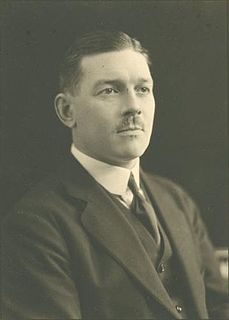
John Grant "Jack" Duncan-Hughes was an Australian politician. He was a member of the Australian House of Representatives for Boothby from 1922 to 1928, of the Australian Senate for South Australia from 1932 to 1938, and of the House of Representatives for Wakefield from 1940 to 1943. He represented the Nationalist Party (1922–28) and its successor the United Australia Party.
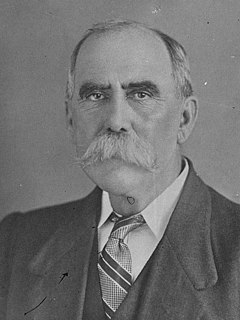
John Estell was a politician and coal miner in New South Wales, Australia. He was a member of the New South Wales Parliament for 29 years, including 20 years in the Legislative Assembly. He was a minister in the Holman, Storey and Dooley Labor governments.
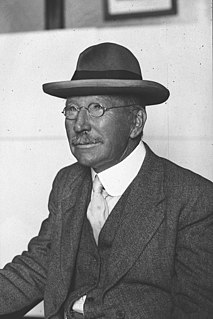
Arthur Hill Griffith was a politician, teacher and patent attorney in New South Wales, Australia. He was a member of the New South Wales Legislative Assembly from 1894 until 1917 and held a number of ministerial positions in the Government of New South Wales. He was a member of the Labor Party.

Elizabeth Lilian Maud Fowler MBE, JP was an Australian politician. She was Australia's first female mayor, serving as mayor of Newtown, New South Wales, from 1937 to 1939. She later represented the seat of Newtown in the New South Wales Legislative Assembly from 1944 to 1950. She had a long involvement with the Lang Labor faction of the Australian Labor Party (ALP), which had evolved into a separate party by the time of her election to parliament.
A by-election was held for the New South Wales Legislative Assembly seat of Kahibah on 31 October 1953. It was triggered by the forced resignation of Labor MLA Joshua Arthur, after a Royal Commission found his dealings with Reginald Doyle were improper. and was won by independent candidate Tom Armstrong.
Members of the New South Wales Legislative Assembly who served in the 23rd parliament of New South Wales held their seats from 1913 to 1917. They were elected at the 1913 state election on 6 December 1913.</ref> The Speaker was Richard Meagher.
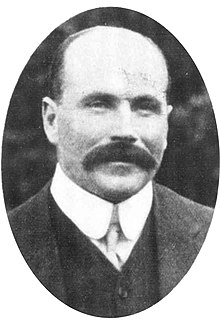
William George Ashford was an Australian politician.
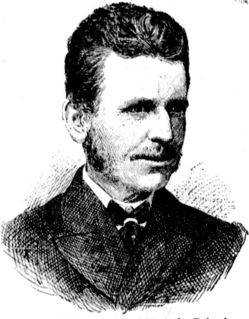
John Stuart Hawthorne was an Australian politician.
Thomas Henry Thrower was an Australian politician. He was an Australian Labor Party member of the New South Wales Legislative Assembly from 1904 to 1907 and 1910 to 1917, representing the electorate of Macquarie.
Patrick Joseph Minahan, was an Irish-born Australian politician.

William Neville Harding was a Taxation accountant, company director and New South Wales local government politician who was Lord Mayor of Sydney and an Alderman of the Sydney City Council from 1935 to 1948.
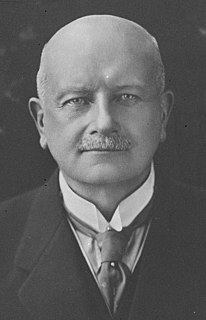
Sir David Storey was an Irish-born Australian politician and businessman. He was a member of the New South Wales Legislative Assembly from 1894 to 1920 and the New South Wales Legislative Council from 1920 until his death in 1924, representing the Free Trade Party and its successors the Liberal Reform Party and Nationalist Party. He was Minister of Public Health in the Nationalist ministry of William Holman in 1919-20.
Carl Adrian Akhurst was an Australian accountant, secretary and politician who served as a Member of the Legislative Council of New South Wales from 1925 to 1934. Initially appointed by the Governor of New South Wales as one of 25 Labor Party appointees, Akhurst was expelled from the party after failing to vote for the Council's abolition in 1926. Readmitted to the Federal Labor Party in 1931, Akhurst unsuccessfully sought re-election as the ALP candidate to the council in 1940.

Francis Henry Bryant was an Australian politician.
Thomas Douglas Percy Holden was an Australian politician who served as a Member of the New South Wales Legislative Council from 1912 to 1934 and also as an Alderman and Mayor of the Municipality of Redfern. The owner of a tobacconist and barber shop in Redfern, Holden spent most of his career associated with the Australian Labor Party.
The 1904 New South Wales state election involved 90 electoral districts returning one member each. The election was conducted on the basis of a simple majority or first-past-the-post voting system. There were two significant changes from the 1901 election, the first was that women were given the right to vote, which saw an increase in the number of enrolled voters from 345,500 in 1901, to 689,490 in 1904. The second was that as a result of the 1903 New South Wales referendum, the number of members of the Legislative Assembly was reduced from 125 to 90. The combined effect of the changes meant that the average number of enrolled voters per electorate went from 2,764, to 7,661, an increase of 277%. Leichhardt was the only district that was not substantially changed, while The Macquarie and The Murray districts retained nothing but the name.
A referendum concerning the reform of the New South Wales Legislative Council was put to New South Wales voters on 13 May 1933 and was passed by the voters with a margin of 2.94%. The text of the question was:
Do you approve of the Bill entitled "A Bill to reform the constitution and alter the Powers of the Legislative Council; to reduce and limit the number of Members of the Legislative Council; to reconstitute the Legislative Council in accordance with the reformed constitution; to amend the Constitution Act, 1902, and certain other Acts; and for purposes connected therewith."
References
- 1 2 Cunneen, Chris. "Larkin, Edward Rennix (Ted) (1880–1915)". Australian Dictionary of Biography . Melbourne University Press. ISSN 1833-7538 . Retrieved 22 May 2019– via National Centre of Biography, Australian National University.
- ↑ "Writ of election: Willoughby". Government Gazette of the State of New South Wales . No. 157. 26 August 1915. p. 5405. Retrieved 31 March 2021– via Trove.
- ↑ "NSW by-elections". The Australian Worker . 9 September 1915. p. 13. Retrieved 31 March 2021– via Trove.
- ↑ "Willoughby. Mr Wade on the party truce". The Sydney Morning Herald . 22 September 1915. p. 10. Retrieved 31 March 2021– via Trove.
- ↑ "Willoughby election". The Maitland Daily Mercury . 27 September 1915. p. 2. Retrieved 31 March 2021– via Trove.
- 1 2 3 "Willoughby nominations". The Daily Telegraph . 3 September 1915. p. 8. Retrieved 31 March 2021– via Trove.
- ↑ "Willoughby fight". The Daily Telegraph . 2 September 1915. p. 4. Retrieved 31 March 2021– via Trove.
- 1 2 Green, Antony. "1915 Willoughby by-election". New South Wales Election Results 1856-2007. Parliament of New South Wales . Retrieved 31 March 2021.